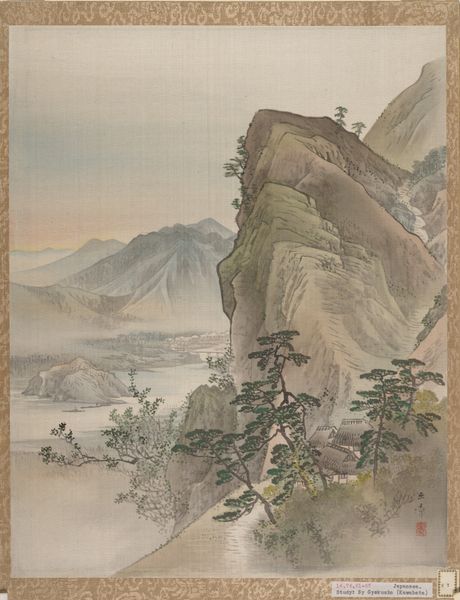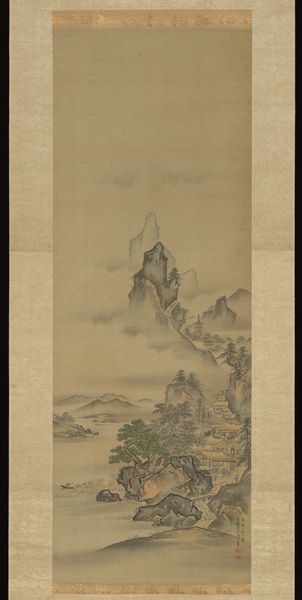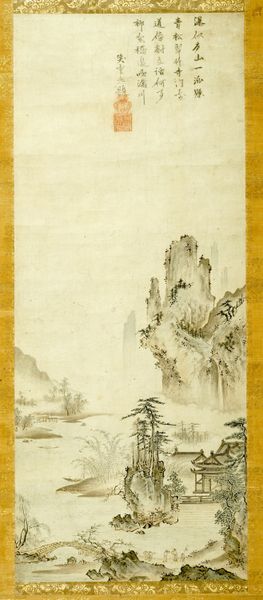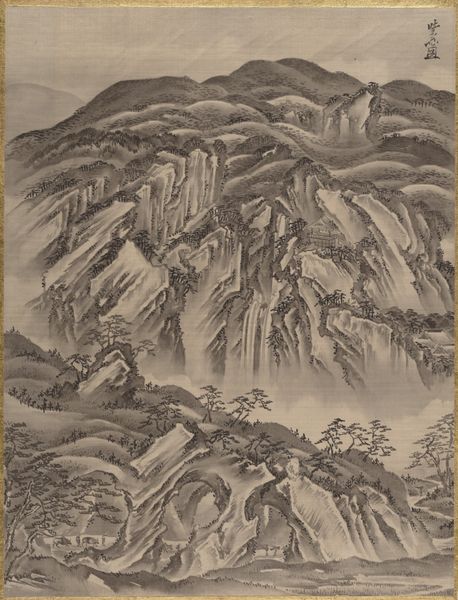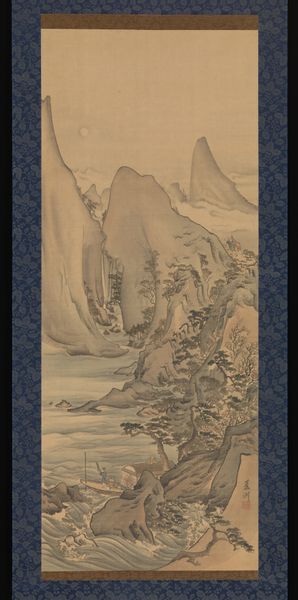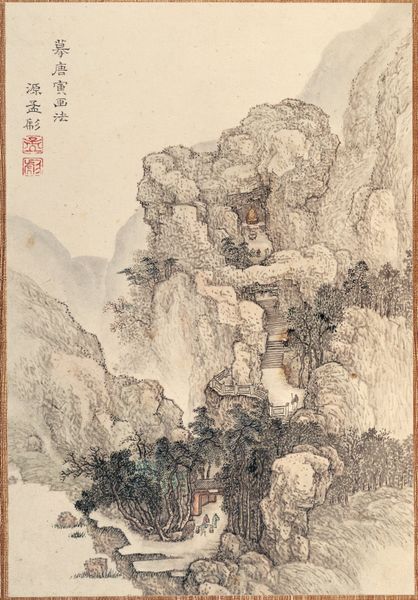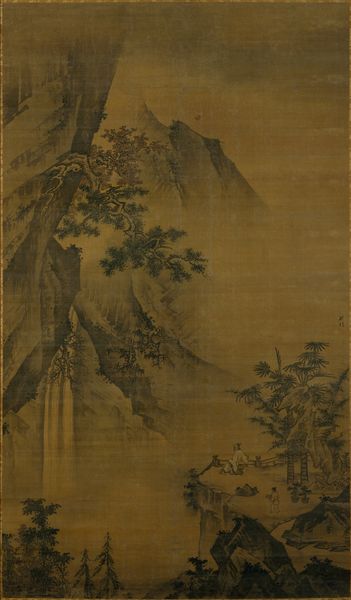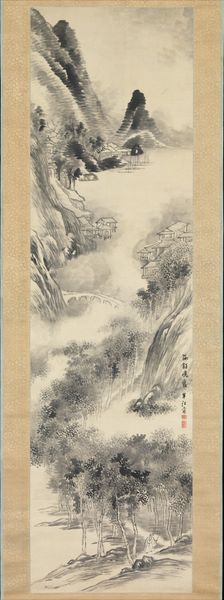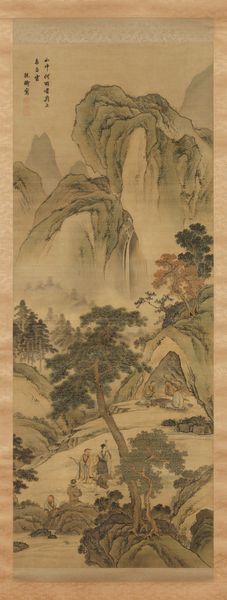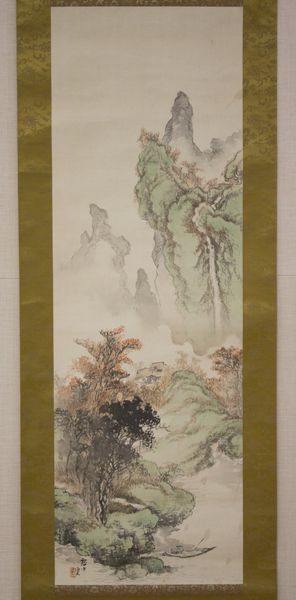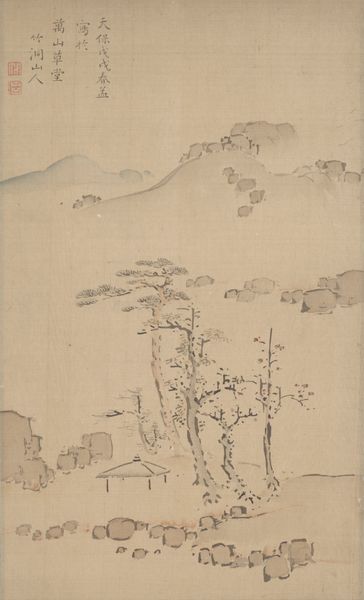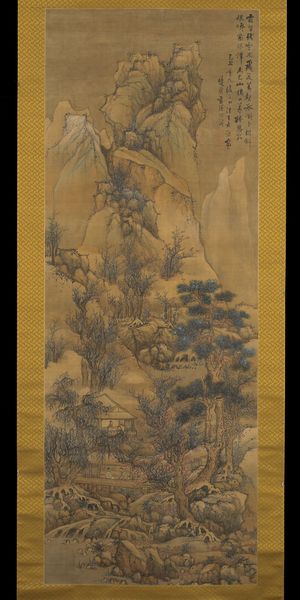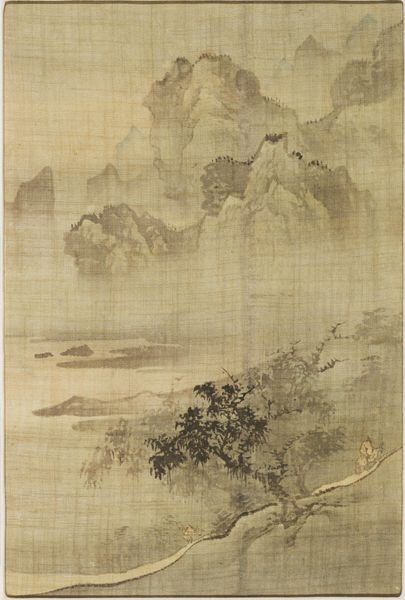
Woodcutter Returning from the Mountain in Spring c. 1900
0:00
0:00
color-on-silk, hanging-scroll, ink
#
abstract painting
#
color-on-silk
#
charcoal drawing
#
impressionist landscape
#
japan
#
possibly oil pastel
#
oil painting
#
hanging-scroll
#
ink
#
fluid art
#
acrylic on canvas
#
underpainting
#
mixed medium
#
watercolor
Dimensions: 45 9/16 x 20 3/16 in. (115.73 x 51.28 cm) (image)78 3/8 x 26 in. (199.07 x 66.04 cm) (without roller)
Copyright: Public Domain
Editor: This is “Woodcutter Returning from the Mountain in Spring” by Suzuki Shōnen, around 1900. It’s ink and color on silk, presented as a hanging scroll. It feels so ethereal, almost dreamlike. The mountains fade into the mist. What are your first impressions of the work? Curator: Initially, the verticality of the scroll format commands attention. Note how the composition leads the eye upwards through the various planes of depth. The artist deftly employs washes of ink to create atmospheric perspective, where distant forms appear less distinct. Consider the texture, almost tactile despite the smooth surface of the silk, and how this is achieved through varied brushstrokes. What strikes you about the artist’s use of line? Editor: It's subtle. The lines are soft, less about defining edges and more about suggesting form. Curator: Precisely. Observe how line and wash are harmonized. The calligraphic quality of the strokes indicates not merely depiction, but also expression. Are you attuned to the structural aspects of the painting beyond mere representation? Editor: I think so. It feels very balanced, even though the mountain on the right dominates the scene. Is that balance intentional? Curator: The asymmetry you observe contributes to a dynamic tension within the composition. Visual weight is counterbalanced through placement and tonal variation. Note how the placement of the woodcutter, small but significant, affects the overall equilibrium of the piece. What might you conclude? Editor: That Shōnen’s work balances both traditional techniques and his own unique stylistic elements to evoke mood? Curator: Indeed. Through careful arrangement of line, form, and tonality, he achieves an aesthetic experience that transcends a simple representation of landscape. Editor: This focus on technique gives me a different appreciation for it, and also an avenue to explore and analyze other artworks going forward. Curator: The close reading of the artwork allows the viewer to derive meaning beyond its immediate representation.
Comments
No comments
Be the first to comment and join the conversation on the ultimate creative platform.
